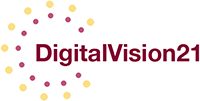Making a core system change is not for the faint of heart. But many banks are hobbled by legacy back-end technology systems designed in the 1980s and 1990s. They need a next-generation core banking system that allows them to operate with the speed and agility required in an increasingly fast-paced and complex world. The industry is slowly shifting away from closed systems in which each bank handles all the work of providing services directly to its customers, toward a model of operating as part of a larger ecosystem. One viable approach for smaller institutions would be to begin shifting certain product segments to a next-gen core and gradually moving over more segments over time.
Websites are more important in communicating with customers and prospects than physical offices. They receive far more traffic than any branch and are the basis for the impressions that many people will form of your company. Not only must the website clearly communicate your brand values, but it should also offer personalized content that is relevant to the visitor.
The banking industry is experiencing a ‘hard fork’, which is another way of saying that it is facing a fundamental change that will require a reimagining of the business model to remain competitive. It’s time to rethink who your customers are, how you sell to them, and where you sell to them. Geography is no longer relevant, and providing a better customer experience can be challenging to do. Pursuing strategies related to embedded finance or embedded fintech may be ways to reboot the legacy approach to business.
A Supertanker or a Speedboat? Accenture outlines two approaches to digital transformation which can be pursued simultaneously. Like a Supertanker, it takes a while to change direction with core business processes. Transitioning from a paper-based core business model to a digital one will yield tremendous results but will take a while. But a Speedboat approach leveraging current technologies to develop new products and services can produce more immediate benefits while the much larger ship is turning around.
Real-time payments are available today for banks using the rails available from The Clearing House. The payments landscape has evolved quite a bit over the past 10 years. Looking ahead, the industry will be transformed by richer capabilities to request and receive payments, including the ability to send documents alongside payment information.
